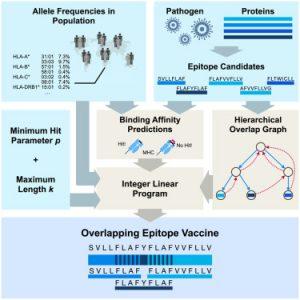In the pursuit of safeguarding populations against infections, vaccine development stands as a critical endeavour. Recent strides in this field have spotlighted epitopes—short protein fragments of pathogens—as a novel approach with immense promise. A recent study introduced a method to pinpoint epitopes capable of eliciting safe immunization across diverse population segments for vaccine development (Figure 1). This research has unveiled a new avenue for identifying vaccine candidates against SARS-CoV-2 using the innovative HOGVAX tool.
Epitopes, acting as triggers for immune responses, emerge as an alternative to mRNA and offer a swift, cost-efficient, and secure means of achieving targeted immune reactions. Given the individuality of immune systems shaped by diverse infection histories, the quest for epitopes hinges on finding those capable of invoking robust immune responses in a broad spectrum of individuals. However, the challenge arises in the limitation of packaging an extensive array of protein fragments within a vaccine due to space constraints within the carrier medium.
In essence, this innovative approach represents a paradigm shift in vaccine design, leveraging bioinformatics to maximize the inclusion of diverse epitopes within vaccine formulations, thereby advancing the potential for broader and more effective immunization strategies.
Journal article: Schulte, S. C., et al. 2023. HOGVAX: Exploiting epitope overlaps to maximize population coverage in vaccine design with application to SARS-CoV-2. Cell Systems.
Summary by Stefan Botha











